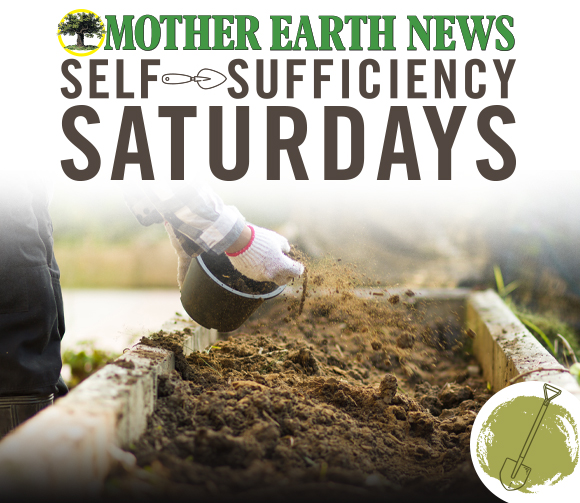[Event] Be Healthier, Happier, and Live Longer
Become a Patron!
You are using an out of date browser. It may not display this or other websites correctly.
You should upgrade or use an alternative browser.
You should upgrade or use an alternative browser.
Garden time is coming
- Thread starter Jimi
- Start date
I wish people understood beneficial insects better.
|
|
Check out Greg's latest planting vid HERE
Early Bird Tree Bundles are HERE
|
|
The Economic Garden
VermontCathy Posts: 1,418 ✭✭✭✭✭
October 5
There are many reasons to have a garden. It's relaxing, it produces food even if you can't buy it elsewhere, the food you grow is healthier than many of the atlernatives, and so on.
In this discussion, I'd to specifically talk about the "saving money" aspect of gardening. This is the direction I'm moving as I try harder to make the garden pay for itself.
I have not run detailed financials on my garden, but I know from looking at expenses and rough estimates of what I get back that some crops are paying their own way and others are not. As the global financial situation deteriorates, I'm more interested in focusing on the stuff that makes economic sense.
My garden choices are also influenced by the small space I have. My native soil is poor clay, so most gardening is done in raised beds, and building beds and stocking them with good soil adds more costs. So I am looking for maximum productivity per square foot, not just per dollar.
Potatoes -- not worth it, at least not if I purchase certified disease-free seed every year. I have found that I can reseed at least one year without disease problems, but it's still very expensive for the yield I get. This year I spent over $80 on potato tubers, plus more on grow bags, and the total amount I got was about one shopping bag worth. I can't justify it any more.
Carrots -- seed is cheap, but they tie up garden space for the entire season. I often grow them under tomatoes, which works, but sometimes they remain very small. It's probably worth growing a few, but I don't see them as a major calorie crop, even though they have a lot of potential.
Lettuce, spinach, mustard -- cheap seed, grows easily, provides nutrients and roughage but few calories. The last couple of years I have planted too much of these crops because they are so easy and productive, and I get more than I can use. They also don't store well.
Tomatoes -- excellent source of vitamins, but few calories. Great product to provide umami flavor and body to sauces, salsa, and similar items. Plants tend to sell for about $1, or you can start them from seed with a lot of time and effort but very little cost. Some years I get a good crop, some not. There is a lot of variation in yield between different varieties. Next year I am going to experiment with a wide variety of different tomatos types and find out what works best. We eat a lot of tomato sauce, and if I could grow enough tomatoes instead of spending almost $60 for 10 lbs in canning season it would definitely save money.
Onion bulbs -- I had a terrible return on onions when I started gardening here. It's hard to get onions started from seed and get them big enough to harvest bulbs in one year, and if it takes two years, it's tying up space that could grow other things. I switched to buying transplants online, which worked, but was expensive and the resulting bulbs were still small. Only a few types of onions are available as sets, so I never liked that path. Eventually I discovered multiplier onions, including walking onions, potato onions, and shallots. Every year I plant some bulbs, let them multiply over the season, then harvest some and replant some for next year. I still don't get as many onions as I use over the course of a year, but now the ongoing cost is very low and I do get usable onions.
Scallions or green onions -- These are far quicker and easier to grow than bulbing onions, and we use them heavily in many dishes. Seeds are cheap, which is good because onions are biennials, making it hard to produce and save your own seed for next year. The stalks of walking onions, shallots, and potato onions can also be used as scallions. Spring onions (Syboes) are perennials, and can also make good scallions.
Cucumbers -- We grow these mainly for pickling. Seeds are cheap, many varieties are available, and making pickles is quick and easy. But you do have to buy a significant amount of canning supplies, including vinegar in bulk, so you have to take that into account. I will continue to grow and can them, but I can't really call them a staple.
Peas -- Cheap to buy seed, and can save seed once you get them going. Yields are decent, certainly enough to make them worth growing. They stop producing in the heat of summer, so you can pull them and grow something else the second half of the year, even in a short season climate like mine. We freeze as many peas as possible for winter.
Beans -- Probably the single crop that produces the most pounds of food for us at the lowest cost. Seeds are cheap, many varieties are available, and they can be eaten fresh, water bath canned with acids, pressure canned, or frozen. We eat them as green beans and also as shellies or dried beans.
Strawberries -- Cheap to buy initially, not as cheap as seed, but for $25 you can buy enough plants to create a solid bed. If you manage them properly, they will produce for many years, sending out runners that create new plants. We love strawberries and strawberry jam, so the amount of garden planted in them has slowly risen over time.
Raspberries -- Delicious, but not very produce per plant. You need a lot of plants to do much, they are more expensive than strawberries, and they take longer to spread. But they are perennials and will keep producing once established. Each year I get a few more plants coming up on their own and a little more yield.
Apples -- We inherited several apple trees when we bought the property. Some are good cultivated varieties, other are wild and produce small fruit that is less sweet. We use them all, making apple jelly, apple chutney, applesauce, apple pies, apple dumplings, apple turnovers, apple cake, and more!
What crops do you grow to improve your financial situation? What would you like to grow that would pay for itself? What crops have you found don't make financial sense for you?
|
A lot of people that work with plants assume that just because they don’t rely on pharmaceuticals or drugs for health that they are automatically holistic. But is it really true? Join our friends Sajah and Whitney Popham from the School of Evolutionary Herbalism, and they will give you a radically new perspective on the practice of herbal medicine! They just released a complimentary mini-course on the practice of Vitalist Herbalism, which digs deep into how you can effectively use plants in a truly holistic way. The Vitalist Herbalism Mini-Course is an in-depth look at some of the critical factors on how you can become a skilled practicing herbalist. They are giving you hours of videos and an awesome workbook that will accelerate your growth and practice of herbal medicine. >>> Click here to sign up for their complimentary course |
I just started a small tub of radishes to be grown inside.
Radishes don't get the credit they deserve, full of vitamins, minerals, and they protect and support good liver function.
Also cut a head of cauliflower and broccoli yesterday, if I remember I'll take a pic. of the cauliflower and put it on later or tomorrow, but had the broccoli last night.
Radishes don't get the credit they deserve, full of vitamins, minerals, and they protect and support good liver function.
Also cut a head of cauliflower and broccoli yesterday, if I remember I'll take a pic. of the cauliflower and put it on later or tomorrow, but had the broccoli last night.
I just started a small tub of radishes to be grown inside.
Radishes don't get the credit they deserve, full of vitamins, minerals, and they protect and support good liver function.
Also cut a head of cauliflower and broccoli yesterday, if I remember I'll take a pic. of the cauliflower and put it on later or tomorrow, but had the broccoli last night.
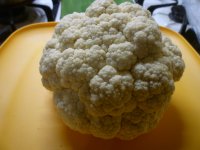
I wish I woulda took a pic of the Broccoli too
Gonna pick another mate to this one in a couple days
Using Natural and Artificial Light for Indoor Plants
Using Natural and Artificial Light for Indoor Plants – Mother Earth News
Can plants grow in artificial light? Wondering how to grow plants indoors? It's possible to grow indoor plants using both natural and artificial light.
www.motherearthnews.com
Successful growers have a curious mindset and know how to ask the right questions!
We realize you might have been busy poking around a pumpkin patch
We didn’t want you to miss out! You’ll learn tricks that will have you harvesting abundant garden treats for years to come. You’ll discover…
RIGHT NOW, you can create the abundant garden of your dreams…no matter what the weather outside is like. And the Masterclass will show you how!
Because dreaming, strategizing, learning, and planning are gardening!
We would hate for you to miss out on all the year-round garden benefits just because you didn’t know what was possible.
>>> Click here to watch 3 scientifically proven strategies for an abundant vegetable and herb garden any time of year (in any climate, indoors or outdoors!)
If you've wanted to grow your own nutrient-rich food, but have been discouraged by setbacks ...
... or would just like to be able to produce an even better harvest in abundance ...
If you’ve delved into home remedies but would love more guidance …
... or you've always wanted to try natural healing practices but are intimidated …
And most of all, if you're tired of having little power or choice when it comes to the quality of your food and medicine ...
... and are ready to transform into the food-producing, medicine-making hero of your own story (!) ...
Grab your seat for “The Best of Home Grown Food Summit” now!
I can’t wait to see you there!
... or would just like to be able to produce an even better harvest in abundance ...
If you’ve delved into home remedies but would love more guidance …
... or you've always wanted to try natural healing practices but are intimidated …
And most of all, if you're tired of having little power or choice when it comes to the quality of your food and medicine ...
... and are ready to transform into the food-producing, medicine-making hero of your own story (!) ...
Grab your seat for “The Best of Home Grown Food Summit” now!
I can’t wait to see you there!
Extreme Composting: Say Goodbye to Landfills and Hello to Soil Fertility
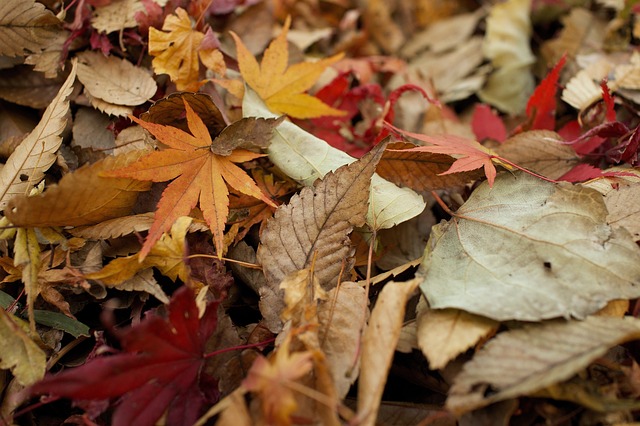
Extreme Composting: Say Goodbye to Landfills and Hello to Soil Fertility - The Grow Network
Every bit of organic material that passes through your household can be returned to the soil as compost. David the Good teaches you how.
 thegrownetwork.com
thegrownetwork.com
Have you ever found yourself lost in YouTube land? As the #2 search engine in the world, many turn to YouTube to find the answers they are looking for.
Just the other day a friend told us about someone that built their house from the ground up through learning what to do with YouTube videos! We’ve come a long way from the encyclopedia days!
But searching YouTube can also be a confusing experience with conflicting information, so it’s important to know how reliable the video source is.
At Grow Your Own Vegetables, we are passionate about sharing garden tips and information and that’s why we created our YouTube channel! Here’s what a few viewers had to share about our videos:




>> Come check it out! https://www.youtube.com/growyourownvegetables
Find a video you like? Please comment and share the video with a friend or on your social media.
Because growing together is more fun!
 Grow Your Own Vegetables Team
Grow Your Own Vegetables Team 
Just the other day a friend told us about someone that built their house from the ground up through learning what to do with YouTube videos! We’ve come a long way from the encyclopedia days!
But searching YouTube can also be a confusing experience with conflicting information, so it’s important to know how reliable the video source is.
At Grow Your Own Vegetables, we are passionate about sharing garden tips and information and that’s why we created our YouTube channel! Here’s what a few viewers had to share about our videos:
>> Come check it out! https://www.youtube.com/growyourownvegetables
Find a video you like? Please comment and share the video with a friend or on your social media.
Because growing together is more fun!
10 Edible Medicinal Flowers To Grow
10 Edible Medicinal Flowers To Grow – Mother Earth News
Here are 10 medicinal flowers to grow in your own garden at home. There are numerous medicinal flowers and their uses are varied, but they all add a splash of color and beauty to the garden.
www.motherearthnews.com
Medicinal Herb Garden: Cold and Flu
Medicinal Herb Garden: Cold and Flu – Mother Earth News
Alleviate cold and flu symptoms without the need for pharmaceuticals by growing this organic medicinal herb garden.
www.motherearthnews.com
| In my part of the world, we are moving towards winter right now. If you're also in the Northern Hemisphere, remember that winter doesn't have to mean you stop growing! I LOVE this technique I learned from Peter Burke several years ago - “indoor salad gardening.” This trick enables you to grow sprouts year round! Article: A Simple Way to Grow Fresh Greens Indoors (Even in the Winter!) Do you have any favorite techniques for growing in the winter? A greenhouse, perhaps? Click "reply" and let me know how you're going to prepare your garden for the winter! |
How to Grow Grocery Store Ginger
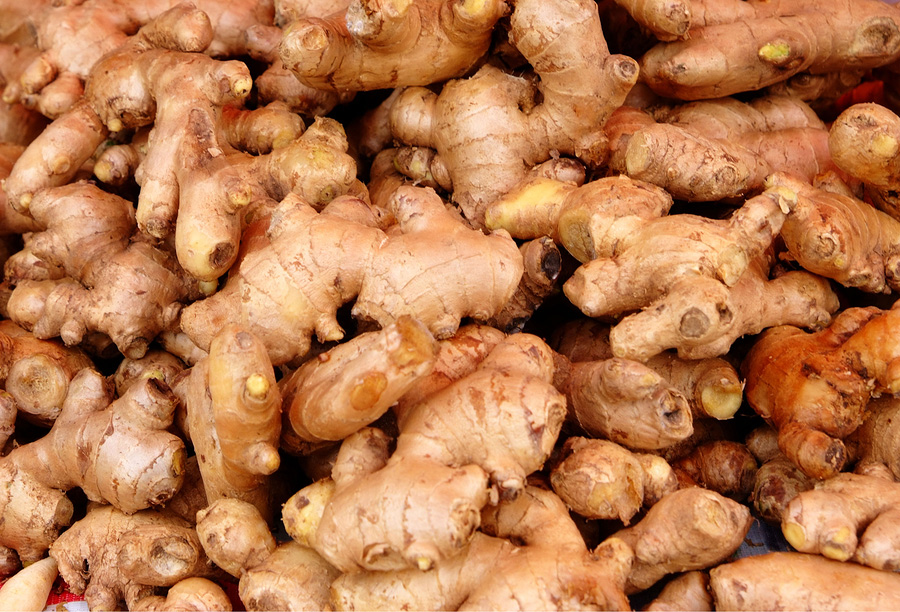
How to Grow Grocery Store Ginger - The Grow Network
It's easy to grow ginger for food, medicine, or aesthetics using ginger roots from the supermarket. Here's how to grow grocery store ginger!
 thegrownetwork.com
thegrownetwork.com
In French cuisine, stocks are often referred to as “fond de cuisine,” meaning the foundation of food. Stocks and broths can be made any time of year. Whether you are using vegetables from your garden through peak harvest months, dehydrated vegetables, or vegetable scraps from other recipes, this cooking method is a staple for getting the most out of what you grow (or get from a farmer).
Stock making is a significant preservation method, and it presumably has been since before the Iron Age.. It seems simple now, but as Michael Pollan talks about in the “Water”’ section of his book Cooked, the invention of vessels that could both hold water and withstand the heat of cooking would have completely revolutionized food preparation. All of a sudden, bones, medicinal roots, and nutritious herbs could be combined in a vessel with water and heated to extract their benefits into a flavorful, nutritious broth that can serve as the foundation for countless culinary endeavors. Stock can be stored in the fridge for 5-7 days, and it can be frozen and kept on hand for quite some time.
Using a homemade stock or broth can bring wondrous and unique layers to soups, sauces/glazes, marinades, and breads. Stocks can also be cooked down until their flavor is robust enough to constitute a sauce. This sauce is referred to as demi-glace, and it is traditionally used as a base for other sauces. Even something as simple as adding pickling liquid, butter, spices, or herbs, such as sage, rosemary and thyme, can elevate a simple stock to a full meal. When cooking down a stock or broth, taste as you go so you can learn how the flavor develops.
Stock making is heavily influenced by traditional French cuisine, and we often look to French mirepoix for the building block of our stocks. Mirepoix technically refers to a specific ratio of 2:1:1 of 2 parts onion to 1 part carrots to 1 part celery, but this can also be used simply as a reference point The higher ratio of onion in French mirepoix lends a more significant richness to the stock due to the high natural sugar content in onions. Onions, for instance, could be substituted for other alliums, such as leeks or shallots. While mirepoix is not a requirement for stocks, it is the core of what makes a good one.
>>> Download or print the Garden Vegetable Stock recipe here
If you won’t be using your food scraps within a few days, freeze your scraps until you’re ready to make your stock. Use the ends of vegetables, stems, and even the cloves in the middle of garlic that are too tiny to peel and chop.
Enjoy your vegetable stock creations!
The Grow Your Own Vegetables Team
Jimi,
If you catch any of the news anywhere, it is hard to not to be pulled into a stress response. With so much change and uncertainty, anxiety can easily rear its head.
Are you having trouble staying grounded?
Do you want to shift your focus away from all the chaos?
We have the perfect workshop for you! Our friend Kami McBride is doing a free workshop on a soothing and healing remedy not just to your skin but to your whole body.
Kami has been teaching the art of herbalism to families for more than 25 years, and she’s produced a FREE workshop designed to teach you, step-by-step, how to make an herbal body butter that is…
 Deeply nourishing and healing
Deeply nourishing and healing
 Easy to make in your kitchen
Easy to make in your kitchen
 Fool-proof, even if you’re just starting out with herbs
Fool-proof, even if you’re just starting out with herbs
 Safe for everyone, from babies and kids to teens and adults
Safe for everyone, from babies and kids to teens and adults
Click the link below to watch her video and download the free recipe that tells you everything you need and exactly how to do it.
>>> Get your workshop and PDF download here!
 The Grow Your Own Vegetables Team
The Grow Your Own Vegetables Team 
P.S. This workshop is a great opportunity to create a gift for yourself…or for a loved one on your holiday gift list!
>>> Check it out!
If you catch any of the news anywhere, it is hard to not to be pulled into a stress response. With so much change and uncertainty, anxiety can easily rear its head.
Are you having trouble staying grounded?
Do you want to shift your focus away from all the chaos?
We have the perfect workshop for you! Our friend Kami McBride is doing a free workshop on a soothing and healing remedy not just to your skin but to your whole body.
Kami has been teaching the art of herbalism to families for more than 25 years, and she’s produced a FREE workshop designed to teach you, step-by-step, how to make an herbal body butter that is…
Click the link below to watch her video and download the free recipe that tells you everything you need and exactly how to do it.
>>> Get your workshop and PDF download here!
P.S. This workshop is a great opportunity to create a gift for yourself…or for a loved one on your holiday gift list!
>>> Check it out!
What measures are you taking to care for and improve your soil?
In this week’s podcast, we’re joined for a second time by Andre Cantelmo, Co-Founder of Heron Pond Farm, located in South Hampton, New Hampshire. At Heron Pond Farm, Andre and his partner, Greg, strive to be biological farmers.Heron Pond fertilizes almost all of their crops with composted chicken manure and just like many organic farms, they use biologically based pesticides. They use certified organic products, including fertilizer, for 90% of their crops. They don't spray any leafy greens or berries with anything, certified organic or not. They never use GMOs. Yes, even certified organic farms use pesticides.
Heron Pond is lucky to have a farm that has many fields far away from one another, which helps with pest control because it allows them to rotate crops out of the range of a particular insect or disease. The vast majority of their weed control is done with a flame weeder and cultivators.
Join us to hear in detail the story of this large thriving farming operation!
Holy arugula!
Our community is full of creative, determined people like you who have made gardening part of their lifestyle…no matter what time of year it is and no matter what kind of space they have.
Our friend Shannon from Philadelphia, Pennsylvania has been growing with us for several years. And recently, she tackled a new project to grow greens year-round...an indoor closet garden!
Shannon’s closet garden has made a huge impact on her life and her health.
>>> Check Shannon’s closet garden story here!
In this video, you’ll learn about Shannon’s closet garden setup and Stacey’s tips for increasing yields indoors:
Are you ready to get creative with your space and overcome obstacles so you can grow all year long?
Watch your email for info about an exciting garden adventure…coming soon!
Let’s celebrate all gardens,
Hi Jimi, as you may know, I'm passionate about gardening.
If YOU are also into growing your own food, medicinal herbs, and flowers (including edible ones you can also use medicinally!), you're going to love...
The Grow Network's free and highly anticipated Best of Home-Grown Summit right here
This event that you can enjoy from the comfort of your home provides you the 12 most-watched, highest rated presentations in The Grow Network's history.
It runs from Dec 2-4 and includes fascinating and very helpful presentations such as:
With the cold weather months here or coming for so many of us, this is an ideal way to break out of "cabin fever" while learning some really useful knowledge.
Plus, if you really enjoy this type of learning like I do and you want to add some Spring and sunshine to the coming winter months...
You'll see how you can get permanent access to every presentation from every single one of The Grow Network's outstanding Home-Grown Food Summits (over 145 presentations).
If you're into gardening and growing your own foods and "medicines," you're really going to ENJOY this free learning event!
FINALLY, with gardening in mind, and because smiles and laughter are always "good medicine"...
Here's a "dad joke" that makes my little kids giggle and is worth sharing with YOU:
Why should you never tell secrets in a garden?
Because the potatoes have eyes, the corn has earns, and the beanstalk!
;-)
Enjoy the fascinating and flat-out useful learning in The Grow Network's free Best-Of event right here and enjoy your day.
To Living Long and Living Well,
If YOU are also into growing your own food, medicinal herbs, and flowers (including edible ones you can also use medicinally!), you're going to love...
The Grow Network's free and highly anticipated Best of Home-Grown Summit right here
This event that you can enjoy from the comfort of your home provides you the 12 most-watched, highest rated presentations in The Grow Network's history.
It runs from Dec 2-4 and includes fascinating and very helpful presentations such as:
- Herbs Aren’t Kale: How To Grow Medicinal Herbs At Home
- Edible Flowers: Using Them As Food & Medicine
- Growing Great Garlic
- Kitchen Medicine: More Medicinal Herbal Wonderments In Your Spice Drawer!
- Defeating Garden Pests
- How To Start Your First Vegetable Garden Without Breaking The Bank
With the cold weather months here or coming for so many of us, this is an ideal way to break out of "cabin fever" while learning some really useful knowledge.
Plus, if you really enjoy this type of learning like I do and you want to add some Spring and sunshine to the coming winter months...
You'll see how you can get permanent access to every presentation from every single one of The Grow Network's outstanding Home-Grown Food Summits (over 145 presentations).
If you're into gardening and growing your own foods and "medicines," you're really going to ENJOY this free learning event!
FINALLY, with gardening in mind, and because smiles and laughter are always "good medicine"...
Here's a "dad joke" that makes my little kids giggle and is worth sharing with YOU:
Why should you never tell secrets in a garden?
Because the potatoes have eyes, the corn has earns, and the beanstalk!
;-)
Enjoy the fascinating and flat-out useful learning in The Grow Network's free Best-Of event right here and enjoy your day.
To Living Long and Living Well,
The 5-Day Fantastical Winter Garden Adventure begins tomorrow! We are so excited to go on this adventure with you!
Set aside about 30 minutes each day to watch. Here’s the lineup of daily topics:
…and that’s just a preview of what you’ll be getting! The daily events will have SO MUCH more for you to see and enjoy. And … there will be fantastical prizes given away each day!
There are two ways to watch the 5-Day Fantastical Winter Garden Adventure: LIVE on Facebook OR for 24 hours through the Grow Your Own Vegetables Event Portal.
>>> Click here to join our Facebook group (if you haven’t already). We’ll be going LIVE every day at 10am Pacific / 1pm Eastern from November 14th-18th.
>>> Click Here to access the Event Portal. Just log in, and you can watch each day of the Fantastical Winter Garden Adventure FREE for 24 hours starting at 10am PT.
Day 1 Kicks off on November 14th at 10am PT, and you will have 24 hours to watch it in the Event Portal. Then Day 2 will take its place on November 15th at 10 am PT. Then Day 3 will take over…you get the idea
Here’s your login information for the Event Portal (save this!):
Click Here to Login:
Your username: [email protected]
Your password: @QZsB8($
Once you’re inside the portal, look for this icon:
| Hi Jimi, |
| What are the best veggies to think about as the thermometer drops? And how should you store and prepare them — so they make your meals taste amazing? |
| Get the whole story on winter vegetables, and some fabulous recipes, here. |
| Yours for health in every season, |
| Ocean Robbins |
| P.S. Winter squash. Carrots. Onions. Winter cabbage. Dark leafy greens. Potatoes. Beets. Turnips. And more! Winter veggies are nutrient-dense. And they can also be delicious. Find out all about what you might want to be feeding your family this winter — right here. |
Just that quick list right there would, I think, be helpful to the people who are lucky enough to have garden space.
P.S. Winter squash. Carrots. Onions. Winter cabbage. Dark leafy greens. Potatoes. Beets. Turnips. And more! Winter veggies are nutrient-dense. And they can also be delicious. Find out all about what you might want to be feeding your family this winter — right here.
Today we kicked off the first day of the Fantastical Winter Garden Adventure! And talk about a fantastical start. 
Day 1 was all about Supercalifragilistic Seeds.
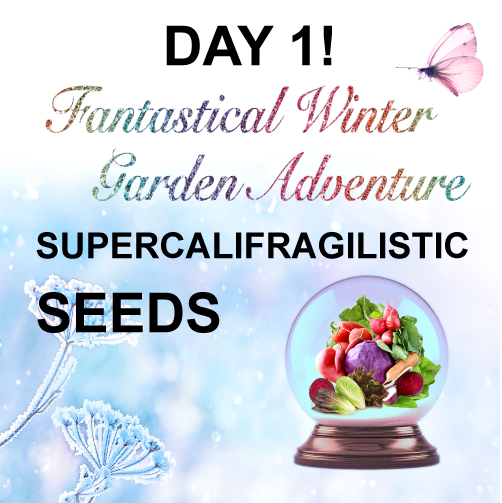
Thousands of gardeners have joined us on this adventure. Here are a few of their takeaways about Day 1 …
“Caring for my winter indoor garden gives me energy thinking of spring, nurturing seeds and then sharing the fruits of my labor with my family for healthier meals is amazing!” Lara P.
“Open my heart! Stop focusing on why this won't work - there are people all over doing this - I can, too!” Emily E.
“We all have (including seeds) everything we need to thrive for generations inside of us!” Lisa N.
“Get out of my head and just start! stop planning what I'll be doing on my balcony this spring and get my grow lights set up (and maybe they'll help with my SAD instead of the happy light I keep forgetting to use!)” Nadia L.
Day 1 will be available for you to watch on the Event Portal until 10am PT / 1pm ET tomorrow (Tuesday, November 15th).
>>> Click Here to access the Event Portal
Just in case, here’s your login information (save this!):
Your username: [email protected]
Your password: @QZsB8($
Once you’re inside the portal, look for this icon:
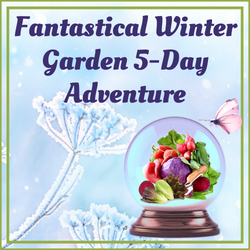
 And … you can still enter to WIN prizes for Day 1! Please email [email protected] and share a take-away from Day 1 and you may win a fantastical prize!
And … you can still enter to WIN prizes for Day 1! Please email [email protected] and share a take-away from Day 1 and you may win a fantastical prize! 
We’ll see you tomorrow for Day 2 … Wonder-full Water!
Planting supercalifragilistic seeds,
 The Grow Your Own Vegetables Team
The Grow Your Own Vegetables Team 
P.S. Don’t miss a thing!
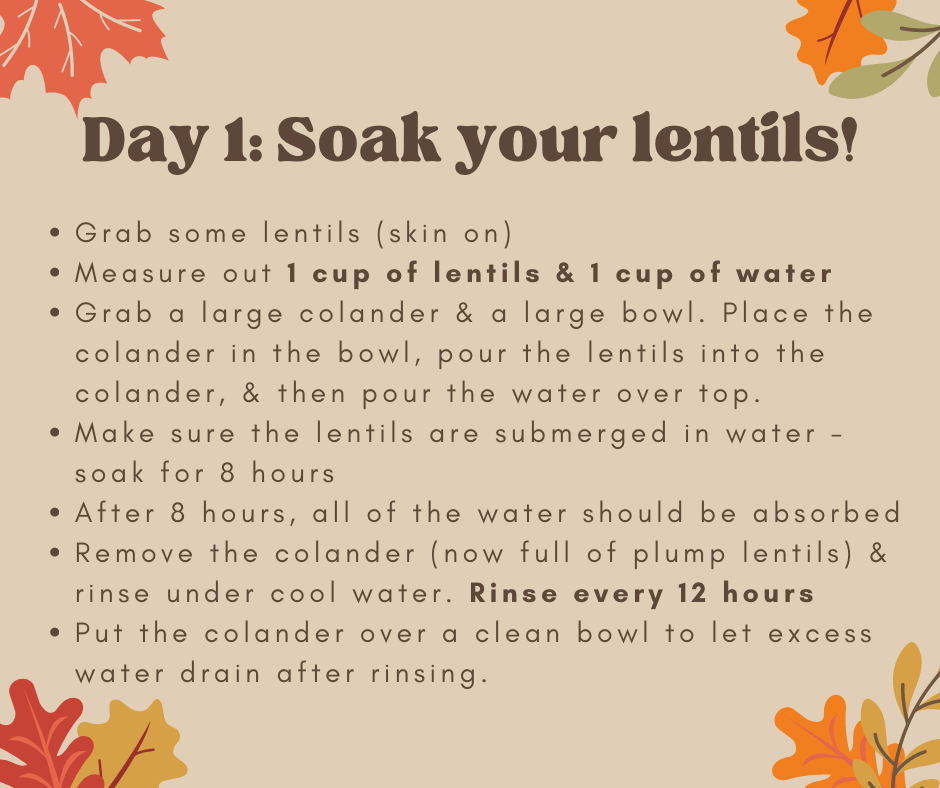
Day 1 was all about Supercalifragilistic Seeds.
Thousands of gardeners have joined us on this adventure. Here are a few of their takeaways about Day 1 …
“Caring for my winter indoor garden gives me energy thinking of spring, nurturing seeds and then sharing the fruits of my labor with my family for healthier meals is amazing!” Lara P.
“Open my heart! Stop focusing on why this won't work - there are people all over doing this - I can, too!” Emily E.
“We all have (including seeds) everything we need to thrive for generations inside of us!” Lisa N.
“Get out of my head and just start! stop planning what I'll be doing on my balcony this spring and get my grow lights set up (and maybe they'll help with my SAD instead of the happy light I keep forgetting to use!)” Nadia L.
Day 1 will be available for you to watch on the Event Portal until 10am PT / 1pm ET tomorrow (Tuesday, November 15th).
>>> Click Here to access the Event Portal
Just in case, here’s your login information (save this!):
Your username: [email protected]
Your password: @QZsB8($
Once you’re inside the portal, look for this icon:
We’ll see you tomorrow for Day 2 … Wonder-full Water!
Planting supercalifragilistic seeds,
P.S. Don’t miss a thing!
8 Cold-Hardy Winter Vegetables
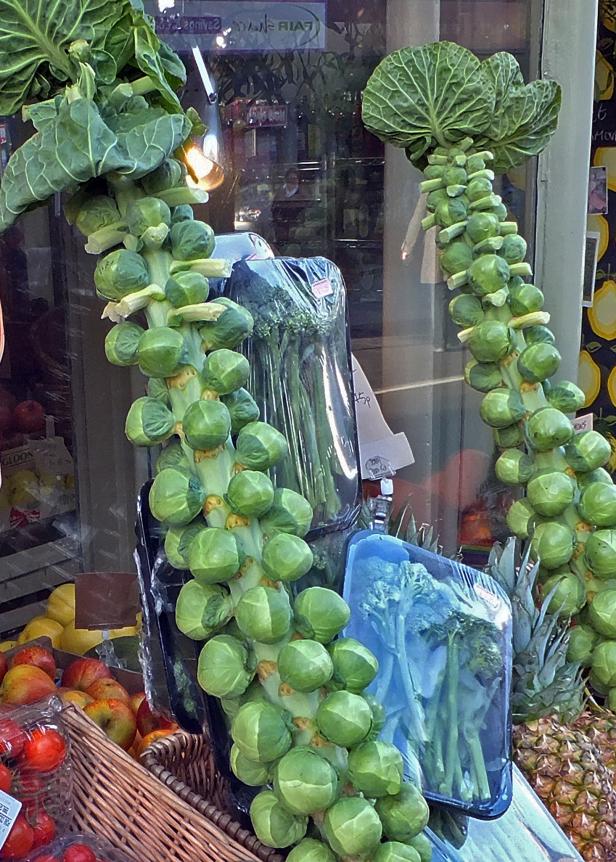
8 Cold-Hardy Winter Vegetables
These crops thrive in the cold and will reward you with healthy, garden fresh food all winter.
Day 2 of the Fantastical Winter Garden Adventure is all about Wonderful Water!
>>> Click Here to access the Event Portal and watch Day 2!
Here is what a few people had to share about Day 2…
“Our positive thoughts and emotions affect everything around us, including water.” Kay J.
“I love that you're talking about Dr Emoto...this is mind-blowing stuff--that changes EVERYTHING!!” Lee J.
“Winter is a wonderful time to learn new gardening techniques.” Tricia P.
Day 2 will be available for you to watch on the Event Portal until 10am PT / 1pm ET tomorrow (Wednesday, November 16th).
>>> Click Here to Access the Event Portal:
Your username: [email protected]
Your password: @QZsB8($
Once you’re inside the portal, look for this icon:
We’ll see you tomorrow for Day 3 … Magical Micro-Heroes!
|
It’s almost time for our 3rd and most magical day yet!
>>> Join us live on Facebook at 10am PT / 1pm ET!
[Convert time to your time zone]
Today’s theme is Magical Micro-Heroes!
Just because you can’t see something doesn’t mean it doesn’t exist.
Like in Harry Potter when Hagrid tells Harry he is a wizard…Harry doesn’t see there is a whole world of magic going on right around him!
…Just like you might not see the Magical Micro-Heroes of your garden! The bacteria, fungi, and other microorganisms that we can’t see keep your plants strong and healthy every day.
In today’s session, you’ll learn about…
There are two ways to watch the 5-Day Fantastical Winter Garden Adventure: LIVE on Facebook OR for 24 hours through the Grow Your Own Vegetables Event Portal.
>>> Click here to join our Facebook group (if you haven’t already). We’ll be going LIVE every day at 10am Pacific / 1pm Eastern from November 14th-18th.
>>> Click Here to access the Event Portal. Just log in, and you can watch each day of the Fantastical Winter Garden Adventure FREE for 24 hours starting at 10am PT.
Here’s your login information for the Event Portal (save this!):
Click Here to Login:
Your username: [email protected]
Your password: @QZsB8($
Once you’re inside the portal, look for this icon:
And guess what?!! We are giving away MORE fantastical prizes again today! Join us to get the scoop on how to enter to win.
Don't forget to bring your wand to class!
|
|
|
|
|
Day 4 of your Fantastical Winter Garden Adventure starts soon!
>>> Join us live on Facebook at 10am PT / 1pm ET!
[Convert time to your time zone]
Today’s theme is Bea-YOU-tiful YOU! And our character of the day is…The Grinch!
The Grinch…
…But please don’t give up on him just yet!
One way you can almost certainly love the Grinch is by thinking about him as The Most Improved Character in the story!
After all, you are looking for improvement, not perfection! And no one lives out this spirit like the Grinch. He goes from “World’s Worst Person to Invite to a Holiday Party” to the “Guest of Honor” at the Whoville Christmas dinner… in less than one night!
Progress is what matters here! Which is why Day 4 of our adventure is an opportunity to look inward.
Gardens take time, love, and patience. You want to give yourself the space and energy to succeed. That means you can be ok with making mistakes and learning before labeling yourself a “brown thumb.”
Which is why we’ll be focusing on YOU today! Some of the things we will talk about are…
There are two ways to watch the 5-Day Fantastical Winter Garden Adventure: LIVE on Facebook OR for 24 hours through the Grow Your Own Vegetables Event Portal.
>>> Click here to join our Facebook group (if you haven’t already). We’ll be going LIVE every day at 10am Pacific / 1pm Eastern from November 14th-18th.
>>> Click Here to access the Event Portal. Just log in, and you can watch each day of the Fantastical Winter Garden Adventure FREE for 24 hours starting at 10am PT.
|
Day 5 of the Fantastical Winter Garden Adventure is all about Loopty Loos!
Check it out for gardener takeaways, maximizing learning cycles, and your next steps toward a thriving winter garden!
Day 5 will be available for you to watch until 10am PT / 1pm ET tomorrow (Saturday, November 19th).
>>> Click Here to access Day 5 on the Event Portal
What a beautiful 5 days we have had together!
Some of you have reached out saying you missed a day and asked if there was any way you could still watch it.
So we have set it up for you to catch any days you missed.
>>> Access all five days of the Fantastical Winter Garden Adventure until 11:59 PT!

Just log in and you can watch each day of the Fantastical Winter Garden Adventure before tomorrow at 11:59pm PT.
>>> Click Here to Access the Event Portal:
Your username: [email protected]
Your password: @QZsB8($
Once you’re inside the portal, look for this icon:
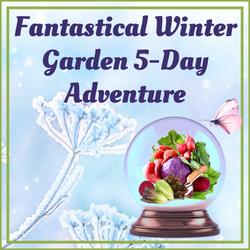
Thank you for being part of this adventure with us!
 The Grow Your Own Vegetables Team
The Grow Your Own Vegetables Team 
Check it out for gardener takeaways, maximizing learning cycles, and your next steps toward a thriving winter garden!
Day 5 will be available for you to watch until 10am PT / 1pm ET tomorrow (Saturday, November 19th).
>>> Click Here to access Day 5 on the Event Portal
What a beautiful 5 days we have had together!
Some of you have reached out saying you missed a day and asked if there was any way you could still watch it.
So we have set it up for you to catch any days you missed.
>>> Access all five days of the Fantastical Winter Garden Adventure until 11:59 PT!
Just log in and you can watch each day of the Fantastical Winter Garden Adventure before tomorrow at 11:59pm PT.
>>> Click Here to Access the Event Portal:
Your username: [email protected]
Your password: @QZsB8($
Once you’re inside the portal, look for this icon:
Thank you for being part of this adventure with us!
|
10 Edible Medicinal Flowers To Grow
10 Edible Medicinal Flowers To Grow – Mother Earth News
Here are 10 medicinal flowers to grow in your own garden at home. There are numerous medicinal flowers and their uses are varied, but they all add a splash of color and beauty to the garden.
www.motherearthnews.com
Medicinal Herb Garden: Cold and Flu
Medicinal Herb Garden: Cold and Flu – Mother Earth News
Alleviate cold and flu symptoms without the need for pharmaceuticals by growing this organic medicinal herb garden.
www.motherearthnews.com
|
Are you looking to get started in gardening or farming but aren’t sure how? Do you want to find a way to give back to your community? Maybe you are worried you won’t be able to make money, OR you are already growing and selling, but money is tight… Our friend, Michael Kilpatrick, is here to help with the Thriving Farmer Summit! He’s a farmer, homesteader, entrepreneur, and host of the popular Thriving Farmer Podcast. He’s lined up over 37 farming experts who are sharing their best advice on how to add more income to your farm or homestead at the… >>> Virtual Thriving Farmer Summit: Value-added! Click here to grab your free ticket Enjoy hearing from 37+ experts who share everything from: … and so much more! Some of the speakers started in their backyards or on vacant lots. Some, never thought they would be farmers, are starting their second careers and thriving! Some of the things you’ll learn from these expert speakers are… If you ever wondered if you could serve your community AND make a profit from doing what you love, then this is THE event for you! . And best of all, it is 100% FREE, and it’s happening SOON! >>> Click here to grab your free ticket now. |
The presentations for the Thriving Farmer Summit: Value-Added starts tomorrow! Our very own Stacey Murphy will be presenting tomorrow and you won’t want to miss it!
>>> Click here to get the All Access Pass now
We are so excited about these speakers who are sharing amazing things like:
Truly, there’s something for everyone!
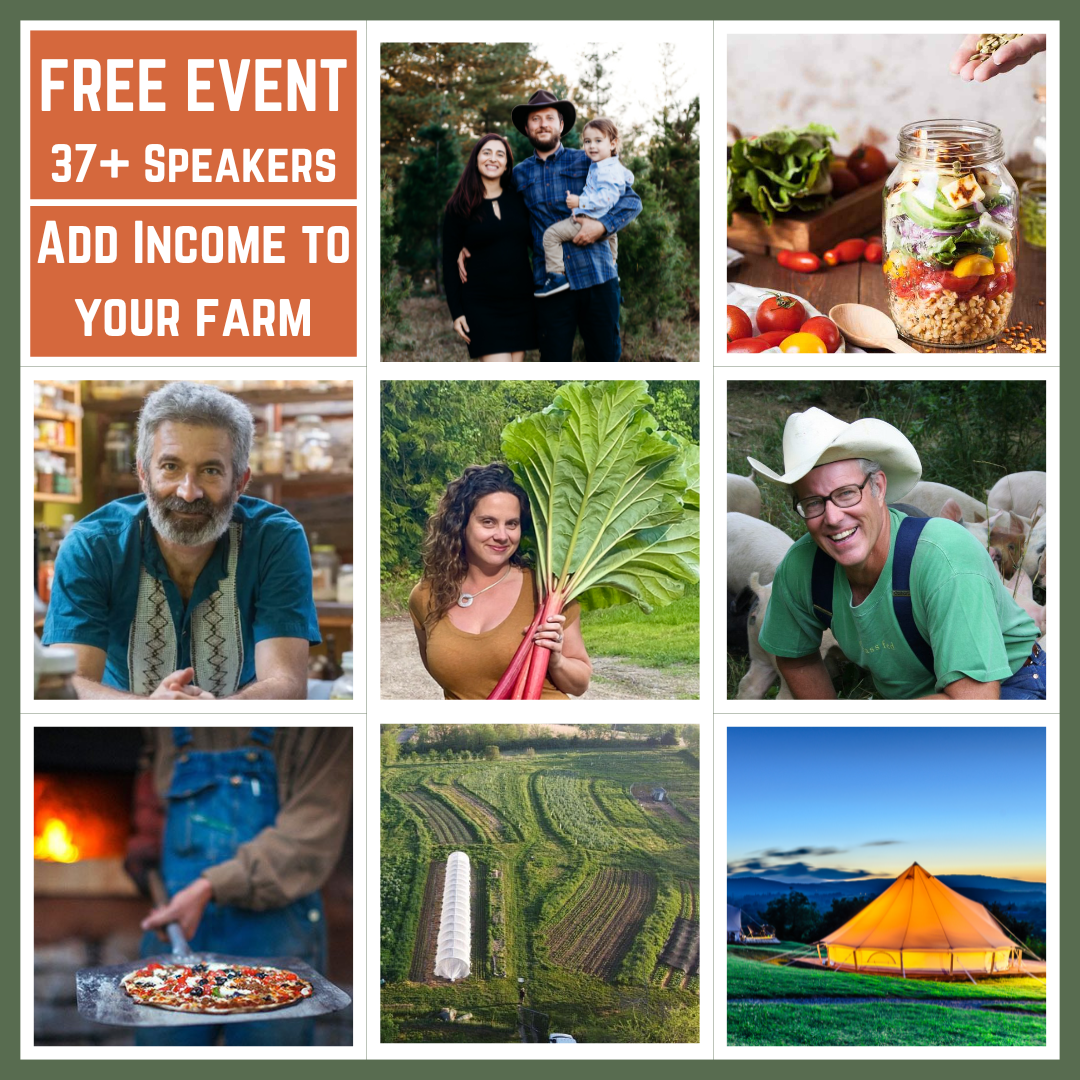
The Thriving Farmer Value-Added Summit
Join us for the Thriving Farmer Summit: Value-Added to learn all about adding income to your farm! You’ll learn from 37 different speakers innovati...
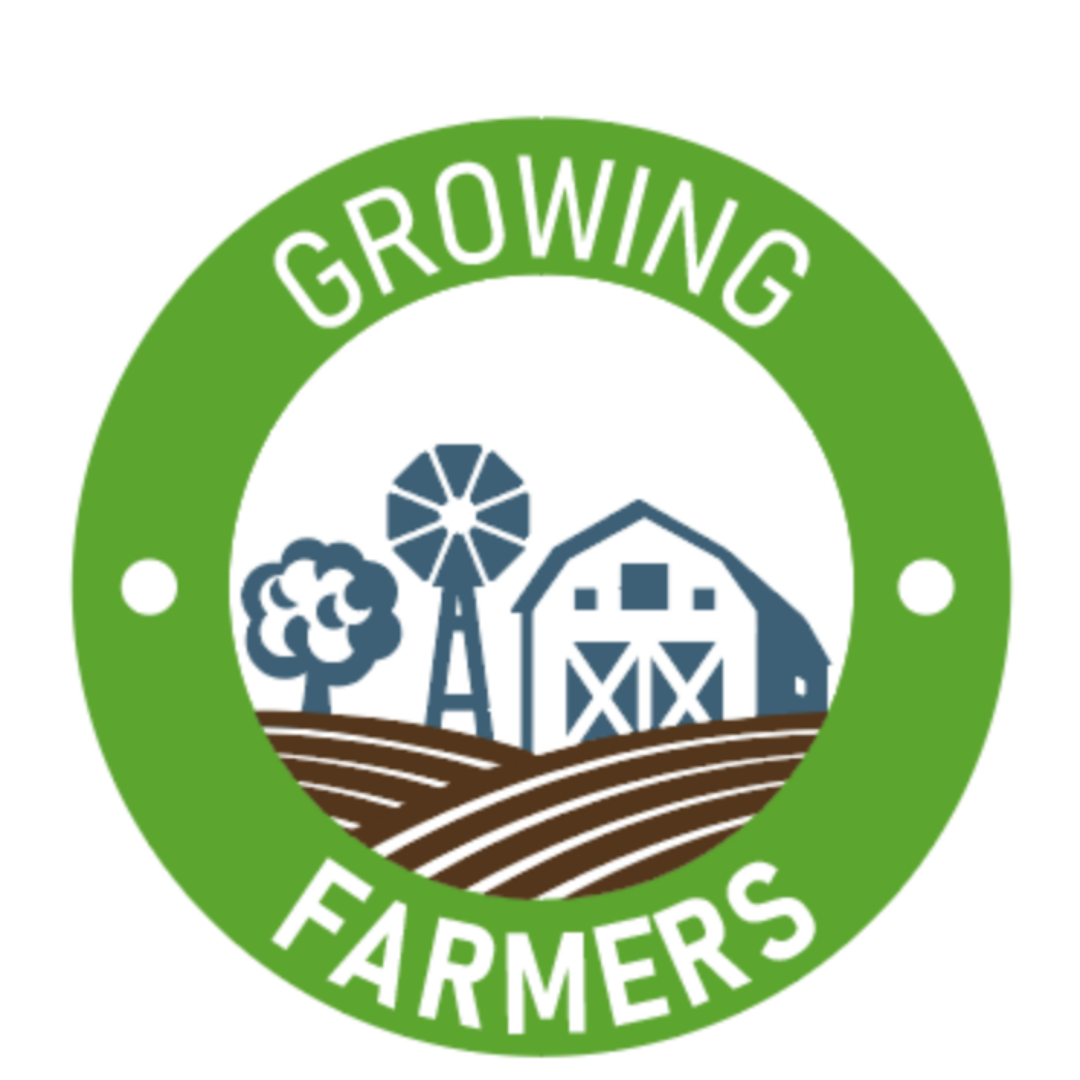 www.farmsummits.com
www.farmsummits.com
This is a free summit
I hope you’re as excited as I am about the first day of the Best of Home Grown Food Summit! These presentations really are the best of the best!
Today, we’re featuring presentations about gardening in containers and raised beds, and starting your first vegetable garden without breaking the bank. You’ll also be introduced to some fantastic (and inexpensive) homemade fertilizers, and the surprisingly captivating world of compost.
Watch Today's Video Presentations Here!
Today, we’re featuring presentations about gardening in containers and raised beds, and starting your first vegetable garden without breaking the bank. You’ll also be introduced to some fantastic (and inexpensive) homemade fertilizers, and the surprisingly captivating world of compost.
Watch Today's Video Presentations Here!
It’s day 2 of the Best of Home Grown Food Summit! Are you ready to watch?
Today, we’ll learn the secrets to growing great garlic and medicinal herbs, as well as effective and safe strategies for keeping garden pests from ruining our harvests.
And I’ll be bringing you a guide to growing food in our ever-changing climate.
Watch Today's Videos Here.
Today, we’ll learn the secrets to growing great garlic and medicinal herbs, as well as effective and safe strategies for keeping garden pests from ruining our harvests.
And I’ll be bringing you a guide to growing food in our ever-changing climate.
Watch Today's Videos Here.
Hi Jimi,
It’s the last day of the Best of Home Grown Food Summit. I hope you’ve been enjoying it as much as I have!
We’re ending strong with a collection of presentations about home grown medicines. Today you’ll learn about natural protocols for common viruses, the surprising herbal remedies you already have in your spice drawer, edible and medicinal flowers, and how to build your own homeopathic first aid kit.
These are some of my favorites, and I’m sure you’ll get as much out of them as I have.
Remember that you’ll have 24 hours to watch these videos for free. You can pause, skip ahead, rewind, and rewatch until the summit ends.
Click Here to Watch the Day 3 Videos!
It’s the last day of the Best of Home Grown Food Summit. I hope you’ve been enjoying it as much as I have!
We’re ending strong with a collection of presentations about home grown medicines. Today you’ll learn about natural protocols for common viruses, the surprising herbal remedies you already have in your spice drawer, edible and medicinal flowers, and how to build your own homeopathic first aid kit.
These are some of my favorites, and I’m sure you’ll get as much out of them as I have.
Remember that you’ll have 24 hours to watch these videos for free. You can pause, skip ahead, rewind, and rewatch until the summit ends.
Click Here to Watch the Day 3 Videos!
Mason Bees: 5 reasons you want them in your garden
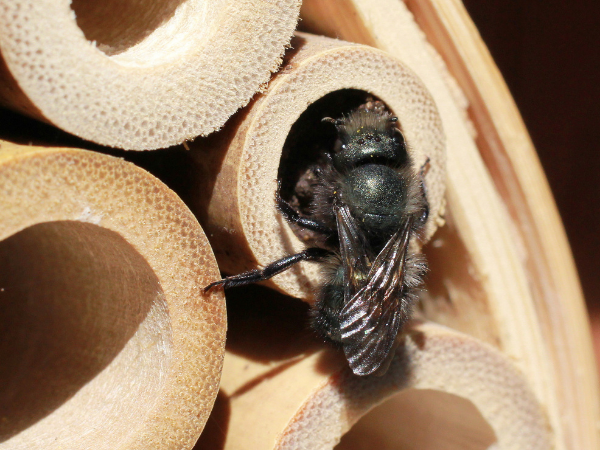
Mason Bees: 5 reasons you want them in your garden
You’ve heard about the bee… but have you heard about the mason bee? There are approximately 20,000 known species of bee on this planet, and 139 of those species are mason bees. If you’ve never heard of them, let me fill you in a bit because these little critters are amazing!
 growyourownvegetables.org
growyourownvegetables.org
How to Grow Mustard Greens (With Recipe)
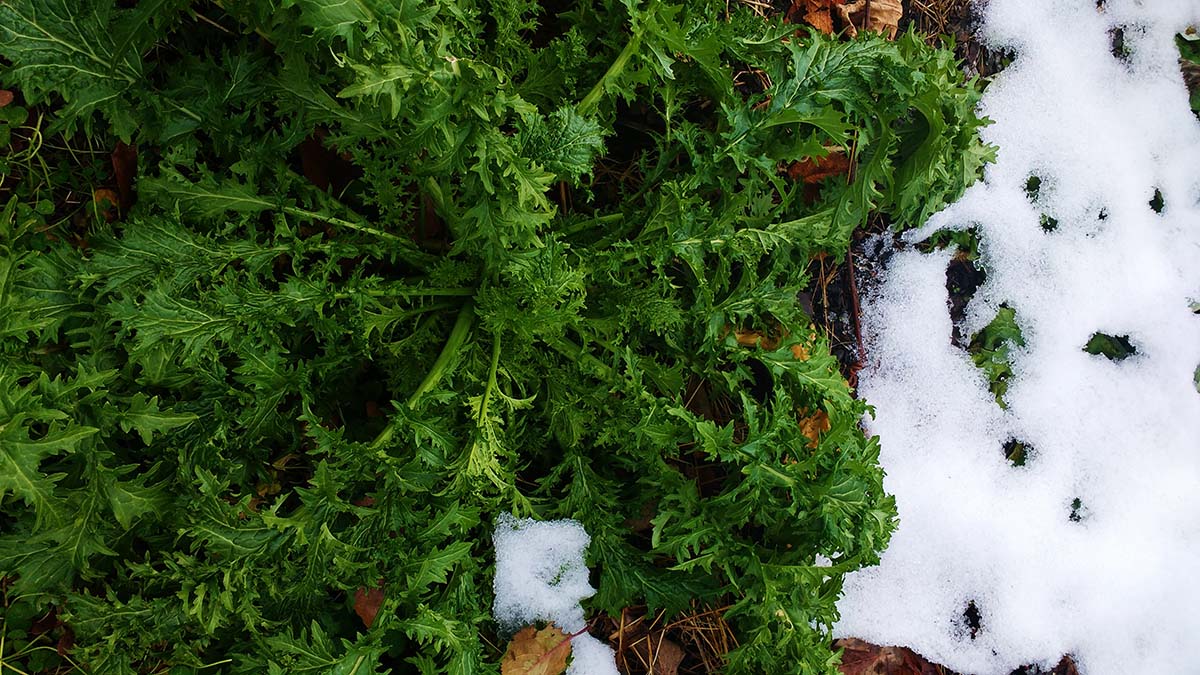
How to Grow Mustard Greens (With Recipe) - The Grow Network
When I think "winter," I think of lush, green garden beds. Surprised? Then let's talk about how to grow mustard greens in cold weather.
 thegrownetwork.com
thegrownetwork.com
Remove That Tomato Debris … Or Is There A Better Way? (Homesteading Basics)
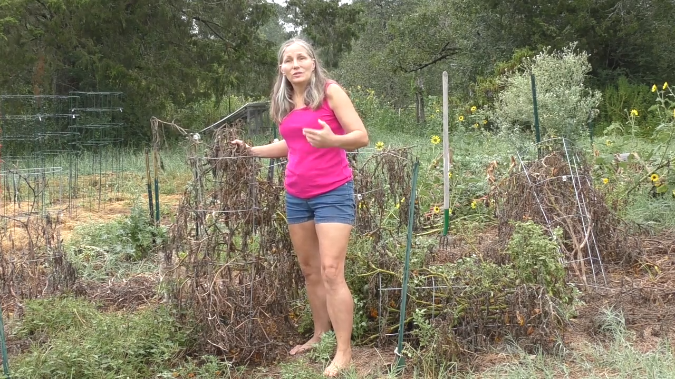
Remove That Tomato Debris ... Or Is There A Better Way? (Homesteading Basics) - The Grow Network
What do you do with your tomato debris? Is it entirely necessary to remove it from the garden at the end of the season . . . or is there a better way?
 thegrownetwork.com
thegrownetwork.com





